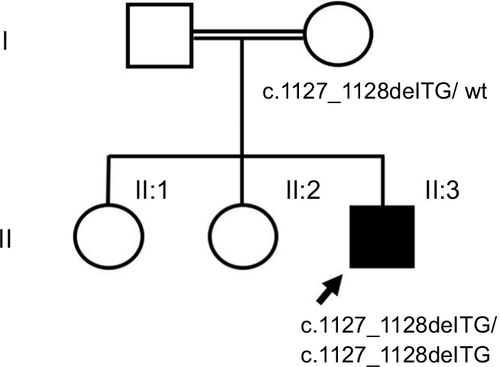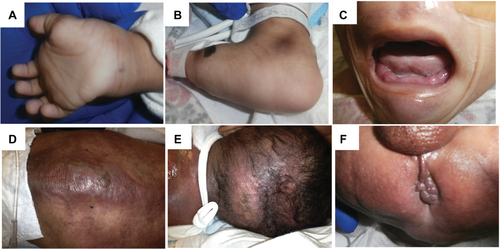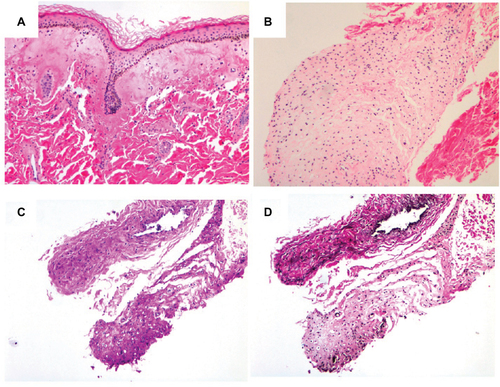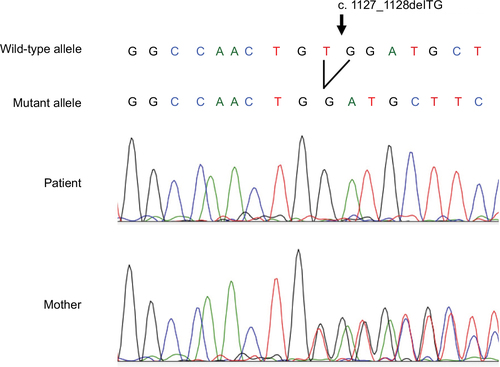Figures & data
Figure 1 Pedigree and genotypes.
Notes: The affected patient is indicated by the arrow and filled square. The parents are consanguineous, as shown with a double horizontal line. The patient was homozygous, and the mother was heterozygous for the novel ANTRX2 mutation, c.1127_1128delTG (p.V376Gfs*14).

Figure 2 Clinical findings of patient and skin biopsy.
Notes: Contractures of the wrists and ankles (A and B). There were generalized sclerodermatous changes of the skin also appreciated in the extremities, most prominently in the left lower extremity (B). Gingival hyperplasia (C). Skin findings on the back (D), posterior scalp (E), and perineum perianal area (F).

Figure 3 Skin pathology.
Notes: Skin biopsy from the infant’s back with hematoxylin and eosin stain (A and B). Some of the cells in the hyaline material appeared to lie in lacunae, giving it a chondroid-like appearance (B). Periodic acid–Schiff staining (C), and Verhoeff’s Van Gieson stain (D). Original magnification ×100.

Figure 4 Sanger sequencing of ANTRX2 gene.
Notes: Sanger sequencing of the patient’s exon 14 of ANTRX2 gene revealed a homozygous 2-bp deletion at nucleotide 1128, c.1127_1128delTG (p.V376Gfs*14). This frameshift mutation results in a presumed truncated protein. Sequencing of mother’s genomic DNA was heterozygous for the mutation.

